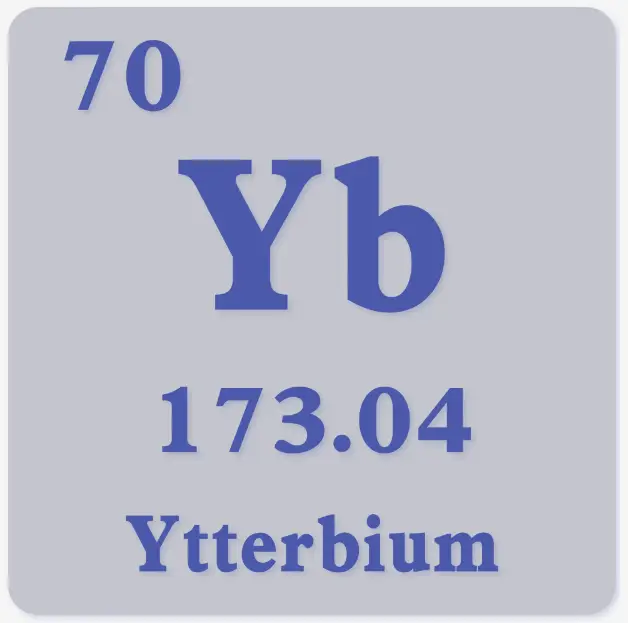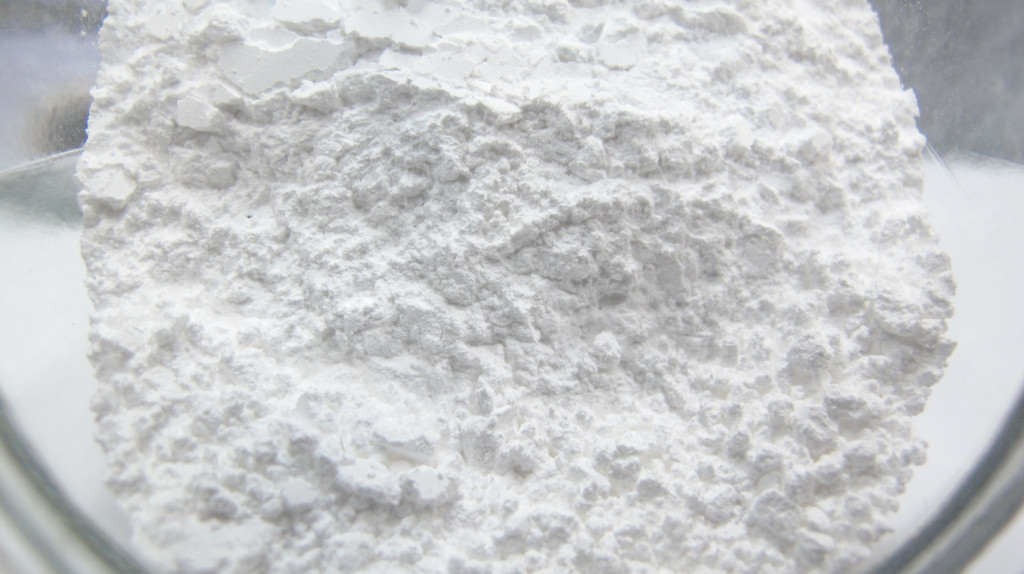As previously discussed, Ytterby village is a source of many rare earth elements; four rare earth elements are named after this place. Earlier articles mentioned yttrium, terbium, and erbium, discovered in gadolinite. Here, we explore ytterbium, the last one.
Table of Contents
Introduction
Ytterbium (Yb) has seven stable isotopes in nature, specifically 168Yb, 170Yb through 174Yb, and 176Yb. Of its 27 observed radioactive isotopes, 169Yb, 175Yb, and 166Yb are the most stable.
In addition to gadolinite and xenotime, ytterbium is mainly found in monazite, a mineral containing a significant portion of rare earth elements. Ytterbium constitutes about 0.03% of monazite.
In 1878, J.C.G. Marignac identified ytterbium in gadolinite by heating erbium nitrate to separate erbium oxide and ytterbium oxide. Naming it “Ytterbia” after the Swedish village, he hypothesized it as a compound of a new element, hence calling it “Ytterbium.”
In 1907, French chemist G. Urbain clarified that Marignac’s ytterbium mixture comprised two elements: ytterbium and lutetium. Urbain named them “Neoytterbia” (for ytterbium) and “Lutecia” (now lutetium).
Curiously, around the same period, Austrian chemist C.A. von Welsbach isolated these two substances as well, but he named them “Aldebaranium” and “Cassiopeium.” Following extensive discussion, in 1909, the scientific community accepted “Ytterbium” for the element based on Urbain’s separation of lutetium from Marignac’s sample.
Due to its similarity to other lanthanides, ytterbium is challenging to isolate. In 1953, scientists finally obtained pure ytterbium using advanced ion exchange techniques, allowing accurate measurement of its chemical and physical properties.
Ytterbium (Yb)
Atomic number: 70
Atomic weight: 173.054 u
Atomic structure: The outermost electronic structure of ytterbium is 4f14 6s2.
Physical/Chemical Properties: It is soft, plasticity and ductility. In its pure form, ytterbium has a bright silver metallic luster.
The metal will slowly oxidize and lose its luster in the air. When it is a fine powder, it will oxidize rapidly when exposed to the air, so it is often stored in a closed container.
The boiling point is the lowest of all lanthanide elements.
Main Application Areas of Ytterbium
- Ytterbium compounds are applied in laser technology, such as in laser marking and range-finding.
- Ytterbium alloys are used to enhance alloy strength and corrosion resistance, making them valuable in aerospace and chemical industries. They’re also found in dentistry, where ytterbium serves as an alloy additive to improve the grain refinement and strength of stainless steel.
- In electronics, ytterbium is used in LED lights and display screens as a component of phosphors.
- Ytterbium compounds are applied in medical imaging and cancer treatment within the healthcare field.
- Ytterbium’s characteristic increase in electrical resistance under high stress enables its use in strain gauges, which monitor ground deformation during seismic events and explosions.
- Gamma rays emitted by the isotope 169Yb serve as radiation sources in portable X-ray machines and other nuclear medicine applications.
- Ytterbium’s role in fiber optics and laser technology includes being used as a dopant in optical fiber amplifiers, fiber optic sensors, and as an active medium in lasers like yttrium aluminum garnet lasers.
- Ytterbium has the potential to replace magnesium in high-density explosive loads for infrared countermeasure flares, offering greater effectiveness in diverting infrared radar detection in military settings.
- Ytterbium is also used in stable atomic clocks; ytterbium-based optical clocks show even higher precision than cesium atomic clocks.


